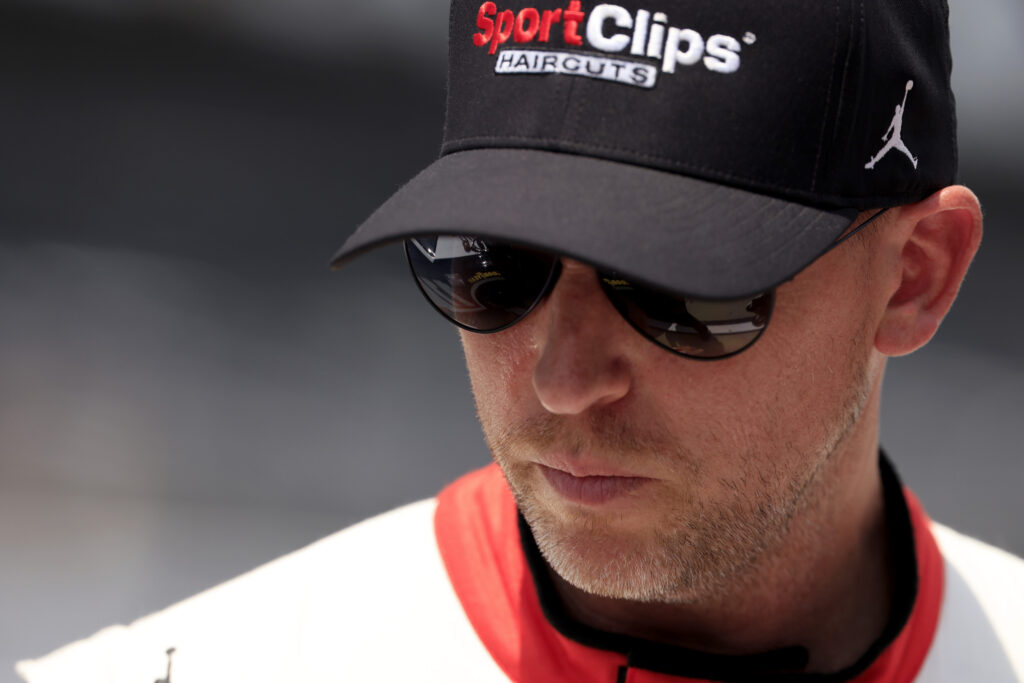NASCAR’s introduction of Next Gen cars to the Cup Series has not only dramatically changed the dynamics of the cars, but has also intensified existing debates about the performance of the cars, which now struggle to handle polluted air and overtake. Among the most vocal critics is driver Denny Hamlin, who recently spoke out about the substantial flaws he sees in the design and functionality of these new race cars.
Hamlin specifically points out a major drawback that becomes apparent when these cars are in traffic, going so far as to call it the worst-case scenario in NASCAR history under such conditions. He admitted on the Podcast on Harmful Actions:
“We’re in such a weird situation where the leader has such an advantage on this track because he has clean air. You can go a lot faster when you have clean air. And we all know these Next Gen cars are terrible in traffic. They’re the worst cars in NASCAR in traffic.”
The criticism doesn’t stop there. The Florida driver has repeatedly voiced his concerns directly to NASCAR officials, including John Probst, about the viability of the cars well before their official launch.

Justin Casterline/Getty Images
“I asked them three times… three times I asked John Probst before this car came out!
“Are you sure that’s true? Because you didn’t put it on any other cars during that pre-season testing.” Then finally in December before they launched the car, they put it on track with another car and they saw it was, “Oh shit, we have a problem.” Well, no kidding. You’ve had two years to figure that out. My God, it’s really frustrating!
“The race was at least compelling because of the strategies, right? It was certainly compelling, and when I watched it, I was like, ‘OK.’ And I kind of warned people who were watching the race last week, ‘Get ready, get your cleats on, because this is what you’re going to see this weekend. You’re just going to have to embrace the strategy part of it.’”
The Next Gen cars have also significantly affected race strategy, with an emphasis on mastering fuel and tire management as tire durability now exceeds fuel capacity, creating racing conditions that fans simply aren’t fans of.
“The reason we also had these fuel mileage races is because the tires last longer than the gas tank. The gas tank, the tires have to be worn out before the gas tank,” Hamlin noted. “I mean, really, you could have, I don’t know how many laps you could have done on said tires, but I would guess a ton, a ton of laps. It was all about track positioning. Track position, track position. And even though there was passing by the No. 5 car (of Kyle Larson) in Stage 3 all the way to the end, he was racing everybody on half throttle. So it’s not what it seems. If everybody was going all out, passing just wouldn’t have been a good thing. Not at all.”
Interestingly, Hamlin compares the Cup Series racing experience to the Xfinity Series, where the cars allow for more aggressive and efficient passing.
“That’s just the way it is. You never have a great race, but when you watch the Xfinity race, you get the impression that they’re able to pass. If a good car is able to pass, then they’re able to manipulate the car in front of them instead of being manipulated by the car in front of them.
“That’s the big difference between Xfinity and Cup, is that in Cup, the closer you get to them, the more your car starts to fly. You lose all the downforce, that’s it. The closer you get to the car in front of you in Xfinity, and what we’ve seen Riley Herbst and a lot of others do, is as soon as you get to the back of the car, it starts to lose the rear downforce, and then it starts to fly off the bottom and you crush it.
“That’s what we used to do with the Gen 4 and 5, which is we could always get the guy in front of us off the line. Now you can’t do that because they don’t do any aero over the body and it’s all under the body. So you can’t get the air out of their spoiler because there’s hardly any air going over the spoiler in the first place. So we have a physics problem.”
These thoughts from a veteran driver highlight the major challenges posed by the Next Gen cars, but there are ways to address the problem. Hamlin himself has advocated for greater autonomy in the cars’ setups to more precisely tailor them to specific track conditions:
“I wish they would let us come up with our own package for this track, just once, and let us decide what we’re going to do. But we’ve been in this zone for a while now where we either have to slow down more or speed up more for the handling to really matter.”

